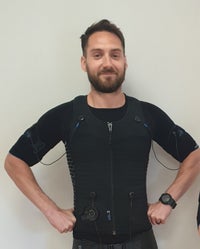
Written by Jack Boardman
Wolverine Workout
X-Men fans and bodybuilders alike have marvelled at the Wolverine physique achieved by Aussie actor, Hugh Jackman. Fans of Jackman’s other work will see the considerable gains the actor made to effectively play the role – especially if comparing the Wolverine films with the first X-Men instalment, where low camera angles did more work than he seemingly did in the gym.
Working with a trainer, David Kingsbury, head trainer at The Fitness Room, Jackman focused on low reps and heavy weights to stimulate myofibril hypertrophy. This was followed by high reps to achieve sarcoplasmic hypertrophy. High reps increased strength and endurance in muscles. The combination of low rep heavy weights and high rep isolated exercises is your foundation to serious bulking.

The obstacle in building such lean muscle? Body fat. For the average weight lifter, concerned with only muscle gains, this might not be an issue as the balance of energy consumption and expenditure makes all the difference. But if you want to look like Wolverine, getting your body fat under 10 per cent will help you gain the shredded look and intensify your abs.
To achieve this, Jackman worked on a bulk and cut routine, increasing consumption to gain mass for muscle, and cutting to keep it all lean. In general, he stuck to a consistent weight-training plan, with the variables being cardio and caloric consumption. To achieve the Wolverine look, consume carbs on weight lifting days, and switch to low carbs for rest days. Measure your food. Food is fuel, and Jackman’s training required only the calories and nutrition he needed and nothing more.
Cardio is a big factor that can’t be ignored. To bring down body fat levels while bulking, low-intensity cardio and interval training are your approaches to time-saving calorie burning.

To build the larger muscle groups, stick to the following:
Barbell bench press
Back squat
Weighted pull-up
Deadlift
As the aim is to gradually increase the amount of weight you lift and also your strength, you will need to plan how to achieve this in phases. Over a four week plan, gradually increase the amount you lift while decreasing reps. Jackman’s plan saw him increase the weight by 10 percent after each set. The percentage is taken from your one rep maximum weight (1RM).
Over the first week, complete a set which includes five reps at 60 percent of your 1RM. Week two, the reps would decrease to four, increasing by 10 percent in weight. Week three, three reps, continuing to increase. Week four, however, sees the weight drop to 40 percent at 10 reps. Over each set, increase the weight by five percent but keep the reps at ten.
This method will see you at 90 percent of your 1RM so it’s important to work with assisted lifts. If you don’t have a trainer like Jackman, work with a gym buddy or consider your compound lifts on the Smith machine, which offers added safety but also balances beneath all that weight.

To achieve sarcoplasmic hypertrophy with high reps, consider which muscles you’ve worked. For example, when working the back, focus on the biceps – for the chest, focus on the triceps – at the end of the workout. Again, keep the movements simple.
Biceps – curls
Triceps – pulldowns, dips, Arnold press
Shoulders – shoulder press, lateral raise
Legs – leg extension, calf raise
Last but not least: rest. Recovery is as intrinsic in growth as nutrition. Jackman reportedly took naps between workouts when on a tight schedule. Whether or not you can afford to do this, make sure that your rest days involve complete immobility and that you allow rest days between exhaustive training on smaller muscle groups.
Our articles should be used for informational and educational purposes only and are not intended to be taken as medical advice. If you're concerned, consult a health professional before taking dietary supplements or introducing any major changes to your diet.







